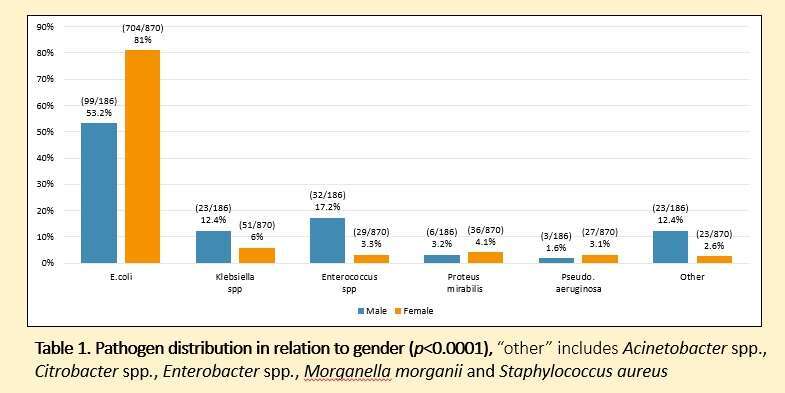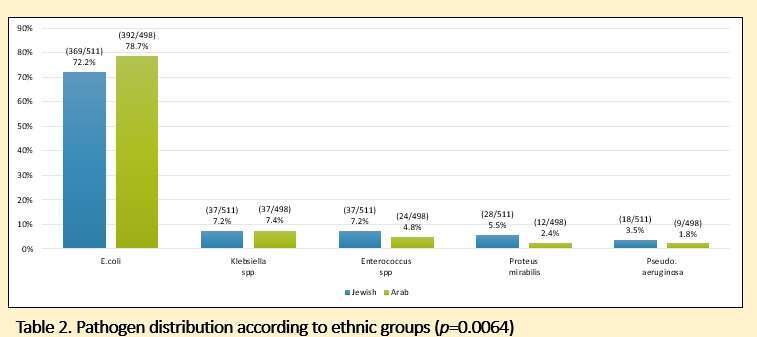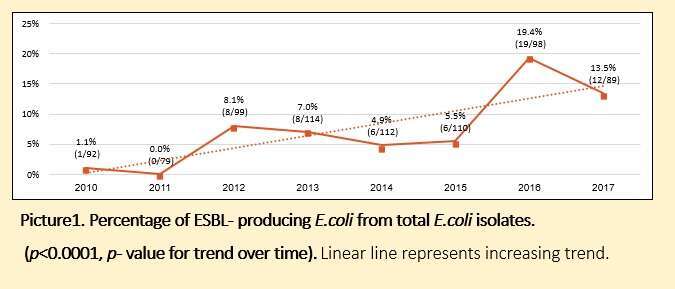
Trends in Distribution and Antibiotic Resistance of Bacteria Isolated from Urine Cultures of Children in Baruch Padeh Poriya Medical Center between the years 2010-2017
2Clinical Microbiology Laboratory, Baruch Padeh Poriya Medical Center, ישראל
3Pediatric Department, Baruch Padeh Poriya Medical Center, Affilated to the Faculty of Medicine of Bar Ilan University, ישראל
Background: Urinary tract infection (UTI) is a common bacterial infection in children. Complications such as renal scarring are of great concern. Initiating evidence-based empiric antibiotic therapy and identifying antimicrobial resistance patterns are crucially important.
Objectives: The aims of this study is to examine changing trends of uropathogens and antibiotic resistance encountered throughout the years, including trends in incidence of Extended-Spectrum-Beta-Lactamase (ESBL) producing Enterobacteriaceae
Methods: Data of 1,056 children (age ≤15years) hospitalized due to UTI between 1/2010-12/2017 was collected including age, gender, ethnicity, urine culture pathogen and antibiotic treatment including testing for ESBL.
Results: The leading pathogen was E.coli (76%), followed by Klebsiella spp. (7%), Enterococcus (5.8%), Proteus mirabilis (4%), Pseudomonas aeruginosa (2.8%). Statistically significant differences in distribution of uropathogens were found in relation to gender (p<0.0001) and ethnicity (p=0.0064). E.coli was more common in females, while Klebsiella spp. and Enterococcus spp. in males (Table 1). E.coli was more common in Arabs, whereas Enterococcus spp., Proteus mirabilis and Pseudomonas aeruginosa were more common in Jews (Table2).
E.coli constituted 92.3% of ESBL positive cultures. Increasing prevalence of ESBL-E.coli was observed throughout the years (p<0.0001). Increased antibiotic resistance to Ceftriaxone (p=0.0025), Cefuroxime (p=0.0031), Amoxicillin/Clavulanate (p<0.0001), and Ampicillin (p=0.0044) were noted.
Conclusions: Gender and ethnicity are important considerations for empiric antibiotic therapy for UTI.
Continuous increase in resistance to Cefuroxime and Amoxicillin/Clavulanate should be noted. Empiric treatment still include Ceftriaxone or Gentamicin. Ampicillin must be also considered due to Enterococcus.
Treatment regimen should be reconsidered in patient groups with increased risk of ESBL- E.coli.



Powered by Eventact EMS